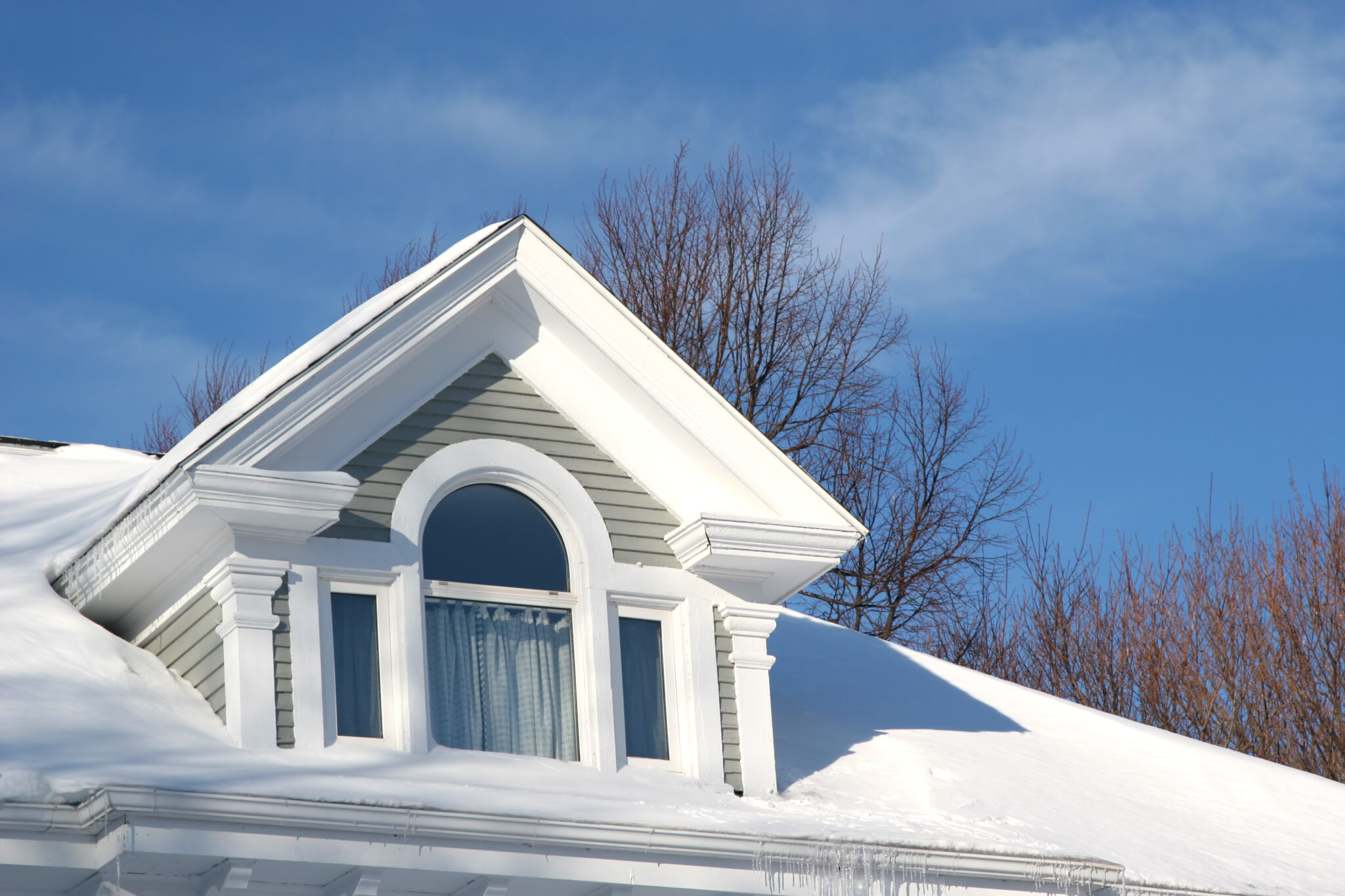The northeastern United States is widely celebrated for its stunningly picturesque winters, creating postcard-perfect landscapes. However, this winter wonderland also presents a set of distinctive challenges, particularly when it comes to roofing. Homeowners in this region must contend with several issues that are directly attributable to the frigid temperatures, heavy snowfall, and persistent ice that are hallmarks of the season. Gaining a thorough understanding of these winter-related challenges is essential for anyone looking to preserve the integrity and extend the lifespan of their roof during these often harsh and unforgiving winter months.

The Impact of Heavy Snowfall
Weight Stress
A major challenge for homeowners in the Northeast is managing the weight of snow that accumulates on their roofs. Roofs in this region are typically built to withstand significant snow loads. However, periods of extreme snowfall can push these limits, creating the risk of structural damage or, in severe cases, roof collapse. The weight of the snow is a critical factor here; wet snow is substantially heavier than its dry, fluffy counterpart. It is vital for homeowners to be aware of their roof’s weight capacity and to keep a vigilant eye on the level of snow accumulation, especially during heavy snowfalls
Ice Dams and Icicles
Furthermore, the formation of ice dams is a significant concern in these regions. Ice dams occur when the upper sections of a roof stay above freezing, causing snow to melt, while the lower parts of the roof remain below freezing. This leads to refreezing of the meltwater at the colder parts of the roof. This freeze-thaw cycle results in the formation of a dam of ice at the roof’s edge, which can impede proper drainage. The consequences can be serious, potentially leading to water seeping under the roof shingles and into the house. Additionally, while icicles hanging from eaves may create a picturesque winter scene, they represent a hazard to people and property beneath, due to the risk of falling. Managing these ice-related issues is crucial for maintaining roof integrity and safety during the winter months.
Freezing and Thawing Cycles
The repeated cycles of freezing and thawing present a significant challenge to roofing materials in colder climates. This process begins when water from melted snow refreezes. As it does so, the water expands, exerting pressure on roofing components. This expansion can cause shingles to lift or crack, leaving the roof susceptible to leaks. Such damage not only necessitates repairs but can also considerably reduce the lifespan of the roofing materials, making it a crucial aspect to monitor during winter months.
Wind Damage
Additionally, winter storms in the Northeast are often accompanied by strong, damaging winds. These winds pose a serious threat to the structural integrity of roofs. They have the potential to loosen or completely tear off shingles, along with causing other forms of structural damage. The risk is particularly high for older roofs or those that have already been compromised by previous weather events. Regular maintenance and inspections are key to mitigating the risk of wind damage.
Condensation Issues
Another less apparent but equally critical challenge is condensation. Inadequate attic insulation and poor ventilation can lead to the accumulation of warm air from the living spaces below in the cold areas of the attic and underside of the roof. This temperature differential can result in condensation. Over time, this moisture can lead to the growth of mold, cause wood rot, and deteriorate the insulation materials. Addressing these issues is essential for maintaining the overall health of the roof and the home, especially in climates where cold weather is prevalent.
Strategies for Mitigating Winter Roofing Challenges
Regular Inspections and Maintenance
For homeowners, it’s crucial to undertake regular roof inspections, ideally scheduling them before the onset of winter and again as the season ends. These inspections play a vital role in identifying and rectifying any potential vulnerabilities in the roofing structure. Engaging a professional roofing expert for a detailed inspection is often the most effective strategy. Professionals can offer a more comprehensive assessment, which might reveal issues that are not immediately apparent to the untrained eye.
Snow Removal
Proactive snow removal is key in preventing excessive weight accumulation and the formation of ice dams on the roof. Homeowners should approach this task with caution, using tools like a roof rake for safe removal or, preferably, hiring professional services to do the job. This is essential to avoid inadvertent damage to the roofing materials, which can occur if snow removal is not done correctly.
Improving Insulation and Ventilation
Improving the attic’s insulation and ventilation can significantly decrease the likelihood of ice dams and condensation issues. Proper insulation serves to retain heat within the living areas, preventing it from escaping to the roof where it can cause melting and refreezing of snow. Adequate ventilation, on the other hand, helps maintain a uniform temperature across the roof’s surface, further mitigating these risks.
Installing Ice Dam Prevention Measures
Installing specific measures to prevent ice dams can be highly effective. Options include setting up heated cables along the edges of the roof or installing specialized ice and water shields beneath the shingles. These measures are designed to prevent the buildup of ice which can lead to dam formation.
Wind Damage Preparedness
To combat potential wind damage, it’s important to ensure that all shingles and roofing materials are securely fastened. For those residing in areas frequently experiencing high winds, investing in wind-resistant shingles could be a prudent decision. These specialized shingles are designed to better withstand the forces exerted by strong winds, thereby offering enhanced protection to the roof.
Final Thoughts
The winter season in the Northeastern United States brings with it a unique set of challenges for homeowners, especially when it comes to maintaining the integrity of their roofs. The issues range from the burdens of heavy snow loads and the formation of damaging ice dams, to the impacts of wind and problems caused by condensation. To effectively navigate these challenges, homeowners should adopt a proactive approach. This includes conducting regular roof inspections both before and after the winter months, diligently removing snow to prevent excessive accumulation, and enhancing the insulation and ventilation in the attic.
In some situations, particularly for older roofs, it may be beneficial to consider investing in upgrades or more robust materials. Such investments can yield long-term advantages, ensuring that your home remains not only warm and dry but also safe throughout the harsh winter months. The cornerstone of effective winter roof maintenance lies in being well-prepared and taking timely actions. By understanding the specific challenges posed by the winter season and addressing them head-on, homeowners can significantly reduce the risk of damage and extend the life of their roofing systems.

